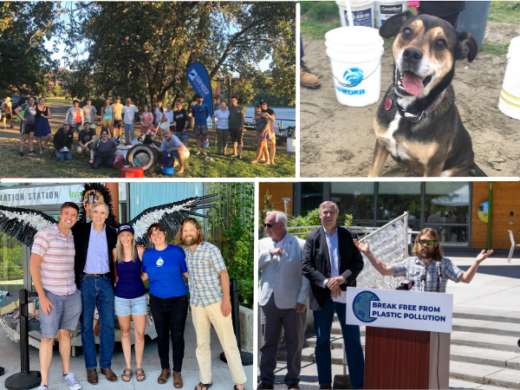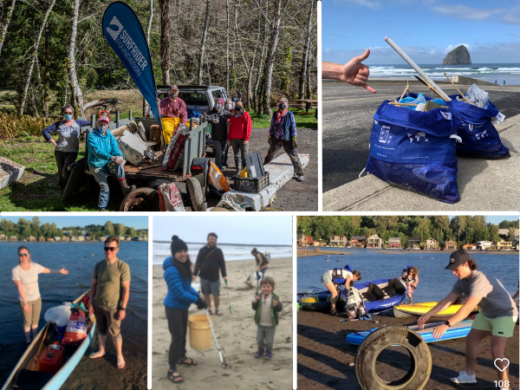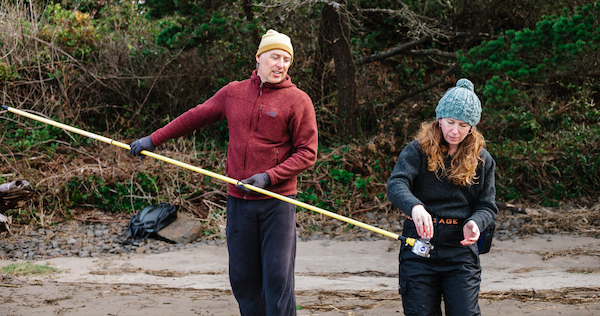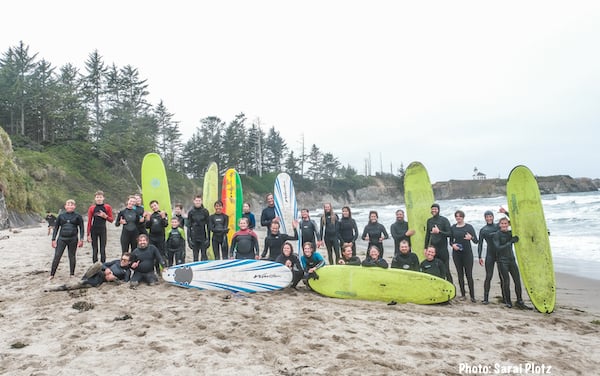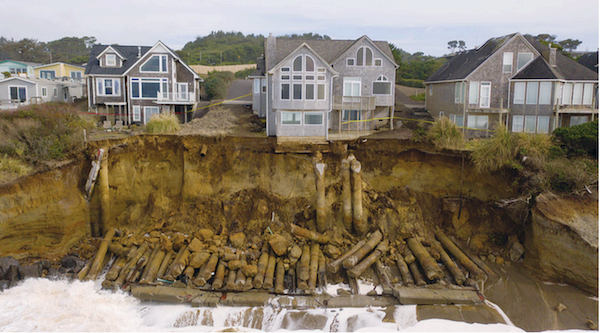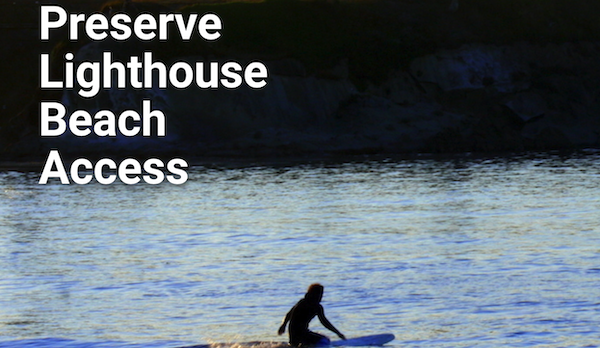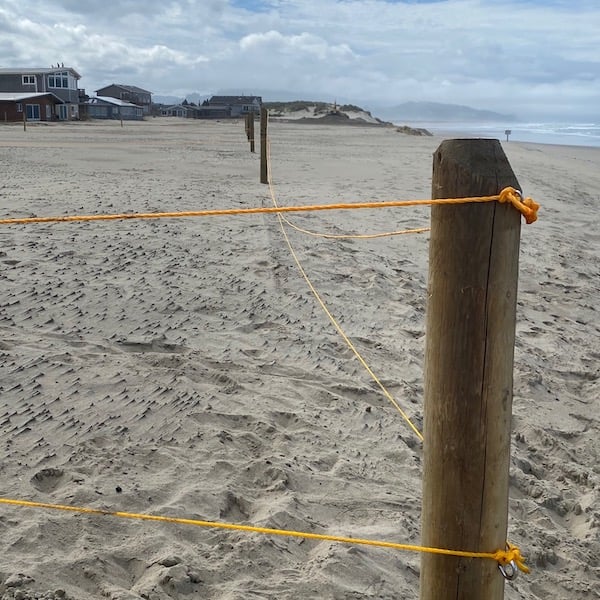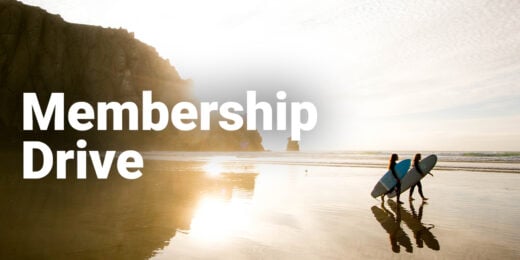
Woohoo! What a wild ride 2021 has been for Surfrider leaders, volunteers and our partners around the great state of Oregon! From barbed wire beach accesses to land use challenges threatening fordunes and beaches, the plight of our public beaches has been an ongoing battle of 2021. On the bright side the year has brought growth and some big accomplishments like authoring new legislation to protect Oregon’s seafloor and finally passing climate investments in our oceans through the Oregon Ocean Science Trust. And ending the year was one of Oregon’s biggest shared victories of all time when Pembina finally pulled the plug on the Jordan Cove LNG export terminal and fracked gas pipeline!
As our plastic pollution legislative actions stalled in the Capitol this year, Surfrider got work on our grassroots base, investing in direct action advocacy training and launching a new Civic Engagement Series. And this year our network grew, ushering in a new Three Capes Chapter in Tillamook Co. that hit the ground running strong with rad outreach, new programs, solid grassroots advocacy and campaigns in Tillamook - check em out!
We are really proud of the work that you, our network, has accomplished and inspired action and change for our oceans and coasts. Here’s a topline summary of key outcomes and highlights from each of our priority initiatives:
Ocean protection initiatives in Oregon are an endurance race and 2021 yielded victorious finish lines for many multi-year efforts to protect Oregon’s ocean. First up were two new intertidal marine protected areas recommended for designation following an extensive statewide process for the Ocean Policy Advisory Council that Surfrider played a significant leadership role on – a Marine Garden at Coquille Point and Research Reserve at Cape Blanco join Oregon’s intertidal rock stars! And picking up from the 2020 Facebook seafloor cable accident, Surfrider helped author and pass new legislation supporting stronger planning and protections for Oregon’s seafloor. Also, after nearly a decade in the making, we successfully passed legislation to support ocean climate science and adaptation initiatives and funding Oregon’s Ocean Science Trust.
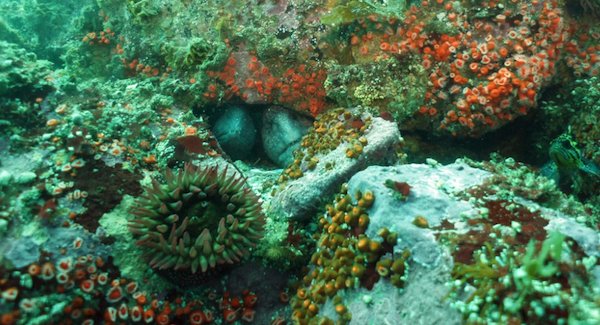 Beneath the surface in Oregon's marine reserves: Can you spot the wolf eels? How about the china rockfish? Photo: ODFW Marine Reserve Program
Beneath the surface in Oregon's marine reserves: Can you spot the wolf eels? How about the china rockfish? Photo: ODFW Marine Reserve Program
Big outcomes like this don’t happen without a strong network, as demonstrated by this year’s virtual “fly-in” on Washington, DC for our annual coastal and ocean recreational advocacy day. Oregon activists joined 78 Surfrider Chapters and clubs that met with 163 Senate and House offices on ocean climate solutions, stopping offshore drilling, funding clean water programs, and reducing plastic pollution. And on the ground in Oregon, our volunteers are back at it hosting events again like marine reserve action days to help protect some of our most beloved special places.
While none of our introduced plastic pollution bills targeting toxics and key single-use plastics moved this session, the state did take a significant leap in modernizing Oregon's recycling system and holding producers more responsible for packaging in our state. For the key plastic pollution bills that didn't make the finish line this year, Surfrider Chapters around the state went to work at the local level. Just this month, Newport passed the most comprehensive plastic food container and foodware ordinance in the state. Lincoln City’s polystyrene ban took effect in April and more efforts to ban single-use plastics are ongoing throughout the state. Lastly, after complaints from businesses, customers, and elected officials about Oregon’s Health Code hampering reusable efforts and proliferating single-use plastics, Surfrider Oregon Chapters launched a campaign to update Oregon’s health code.
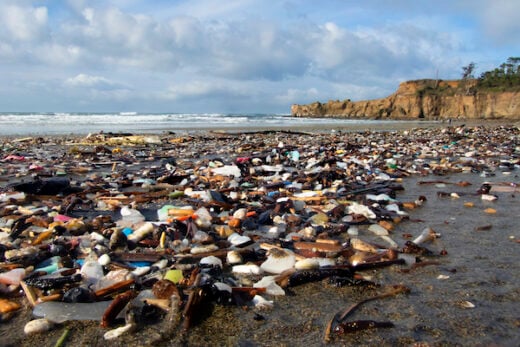 Sadly, winter through spring is now a "season of plastic pollution" on Oregon's beaches, whereby masses of plastic fragments episodically wash ashore - this scene from Otter Rock not uncommon this time of year. Photo Andree Devine
Sadly, winter through spring is now a "season of plastic pollution" on Oregon's beaches, whereby masses of plastic fragments episodically wash ashore - this scene from Otter Rock not uncommon this time of year. Photo Andree Devine
This year we had a lot of fun hosting several great events to build awareness around plastic pollution. Surfrider Oregon, along with partners, hosted a Break Up With Plastic event, a Rise Above Plastic Pollution Day celebration, and a Plastic Free July Press Conference with Senator Merkley. And with our partners at Environment Oregon and Oceana, we organized a legislative panel on our plastic pollution priorities for the House Energy & Environment Committee.
And as usual, our chapters continued to get our hands dirty with ongoing beach cleanups – having fun while leaving our favorite places better than we found them!
Nationwide our network knocked it out of the park with over 800 cleanups and nearly 1,000 volunteer leaders engaged in cleanup programs! Oregon contributed it's fair share to the effort with dozens of beach and river cleanup efforts, hundreds of volunteers and many thousands pounds of debris removed!
Chapters were stoked to reopen six of their seven Blue Water Task Force labs and water quality monitoring programs conducting hundreds of samples at your favorite recreational beaches. Following a hiatus due to the pandemic, chapters shared information and refreshed with a live demonstration from our Seaside High School lab accompanied by a presentation from the Oregon Dept. of Environmental Quality on Oregon’s Beach Water Quality Monitoring Program (watch the event here). And we have an exciting announcement coming in January about a new lab partnership and expanded testing sites– stay tuned for the announcement!
In the next few years there will be some solid opportunities to address water quality issues in our state. Congress passed the $1.2 trillion bipartisan Infrastructure and Jobs Investment Act, which, in part, funds wastewater upgrades to protect beach water quality from sewage and urban runoff.
The Coos Bay Chapter, hoping to capitalize on these investments for local clean water solutions, has launched a new clean water campaign to source ongoing bacteria contamination at Sunset Bay, a beloved local beach plagued by ongoing health advisories.
As climate change takes its toll on our coastlines, 2021 has brought these forecasted challenges for our beaches and coastal preservation work front and center. Ground zero for this work has been on the central coast, where our new-formed Three Capes Chapter in Tillamook has been holding the line for public beaches - from appealing County land use decisions that favor private seawalls over public beaches to defending beach access, management for beach driving and educating beach recreational users, they’ve been busy trying to keep the beaches in Tillamook County in the public trust. At the heart of this battle coastwide is defending the state’s Goal 18 Land Use Policy that protects our beaches and dunes, which continues as a major focal effort for our beaches and climate work in 2022.
Beyond our local grassroots advocacy, we’ve continued our national awareness of these issues by publishing the 5th Annual State of the Beach Report and communicating about climate change. Surfrider brought together some of the key planners, permitters and scientists leading important discussions and decisions for the future of Oregon’s public beaches for a public forum on Climate Change and the Future of Oregon’s Beaches.
Despite the coastal preservation challenges Oregon defeated one of the worst climate and equity development projects affecting the coastal zone this year when Pembina finally pulled the plug on the Jordan Cove LNG Project, an incredible victory for our state and some closure for our Coos Bay Chapter.
Looking toward solutions, Sea Grant Oregon released the Oregon Coastal Hazards Mapper, a tool that supports a collection of coastal hazard resilience case studies to highlight efforts to reduce coastal hazards risks and build resilience. Surfrider provided a managed retreat case study (scroll down to Coos Bay project here) and soon, Surfrider and partners will be adding a case study that supports an alternative solution for a seawall project that Surfrider defeated in 2020 (stay tuned for this exciting news).
2021 gave us one of the most dramatic threats to a beach access we’ve ever seen when 6’ tall barbed wire was wrapped across the only safe access to the beloved Lighthouse Beach in Coos Bay and the access itself was partially destroyed. The Coos Bay Chapter quickly jumped into action and launched a campaign to preserve the beach access.
In Tillamook County, the Three Capes Chapter fought two applications to hand over portions of two public roads that serve as beach accesses to private property owners. Despite public comments against the application, citing recreational opportunity loss, loss of emergency access, and more, Tillamook County approved the applications.
Nevertheless, Surfrider Oregon Chapters are remaining vigilant in their quest to protect and maintain beach access around the state - as sea level rise, and other climate change impacts collide with private property and development interests, our narrow margin of public trust that is the beach continues to physically and metaphorically erode.
Help us do more good - become a member today! We can't do this work without all kinds of contributors - from those who simply join as a member and individual donors to especially those that contribute significant volunteer time and efforts to protect our ocean, waves and beaches, Surfrider is the power of many! Consider putting us in your holiday giving, grab a Surfrider gift membership or contribute below directly to your local chapter today!
It’s not too late to help your local chapter win the 2021 Membership Drive! Click this link to join your local chapter.




